

Josh Nevett
2025 Kia Tasman review
29 Days Ago
The Ford Ranger remains one of Australia's best-selling vehicles, despite knocking on the door of 10 years old. It doesn't take long behind the wheel of a Wildtrak to work out why.
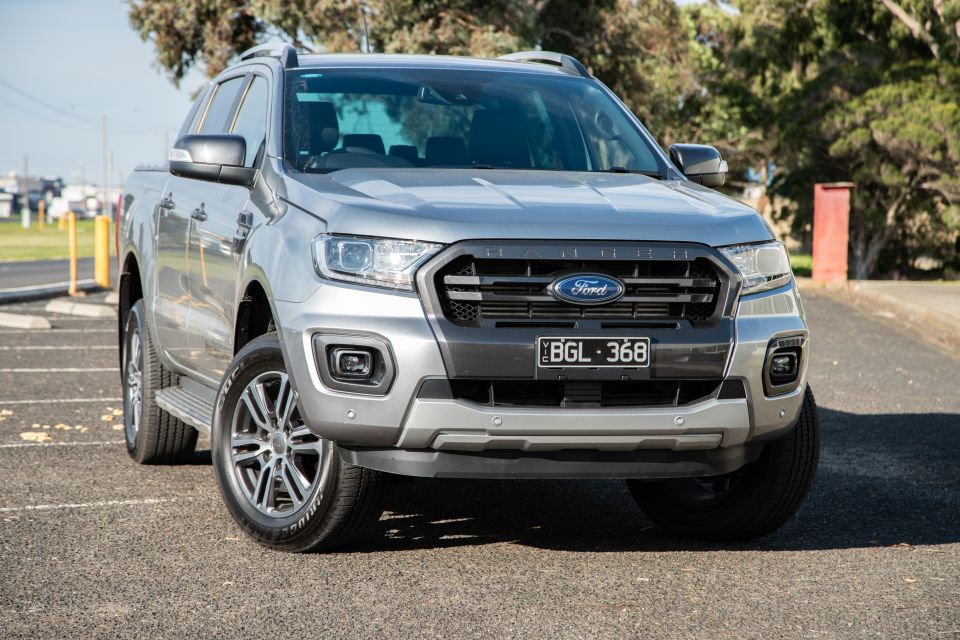
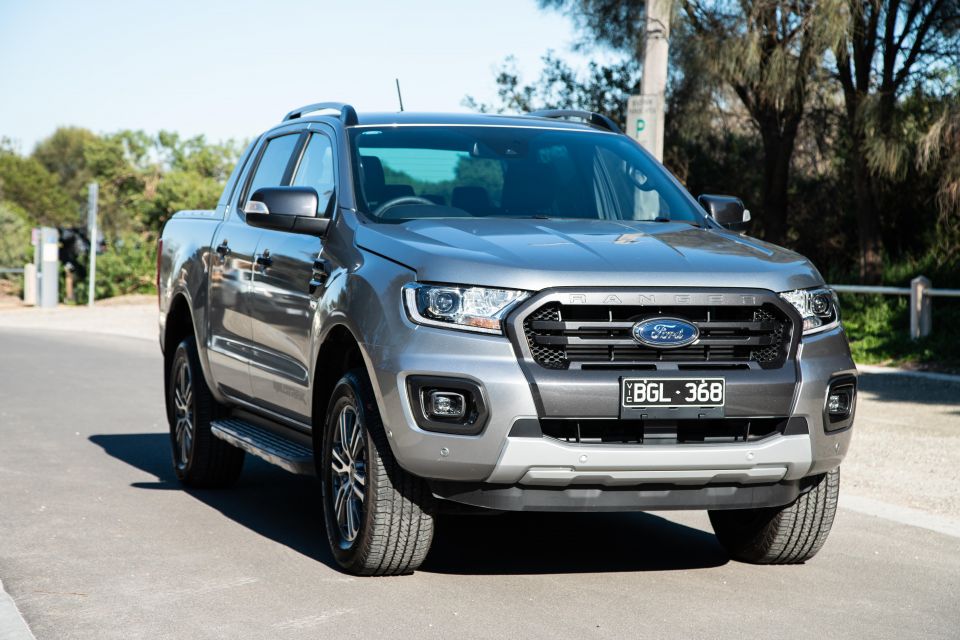

Contributor
New from
$28,340
excl. on-roads

Contributor
New from
$28,340
excl. on-roads


Contributor
New from
$28,340
excl. on-roads

Contributor
New from
$28,340
excl. on-roads
Quickly see how this car stacks up against its competition. Select any benchmark to see more details.
Where expert car reviews meet expert car buying – CarExpert gives you trusted advice, personalised service and real savings on your next new car.
There’s a lot to be said for constant refinement.
The current Ford Ranger was launched in 2011 alongside its platform partner, the Mazda BT-50, with much fanfare.
The world has changed a lot in the intervening nine years. Barack Obama was President when the new Ranger was launched, Julia Gillard was Prime Minster, Sam Newman was still on television, and the Holden Commodore was still being built in Australia.
But nine years, countless updates, and a global pandemic into its life – and at least three years from replacement – the ageless Ranger remains a standout in Australia’s crowded dual-cab ute market.

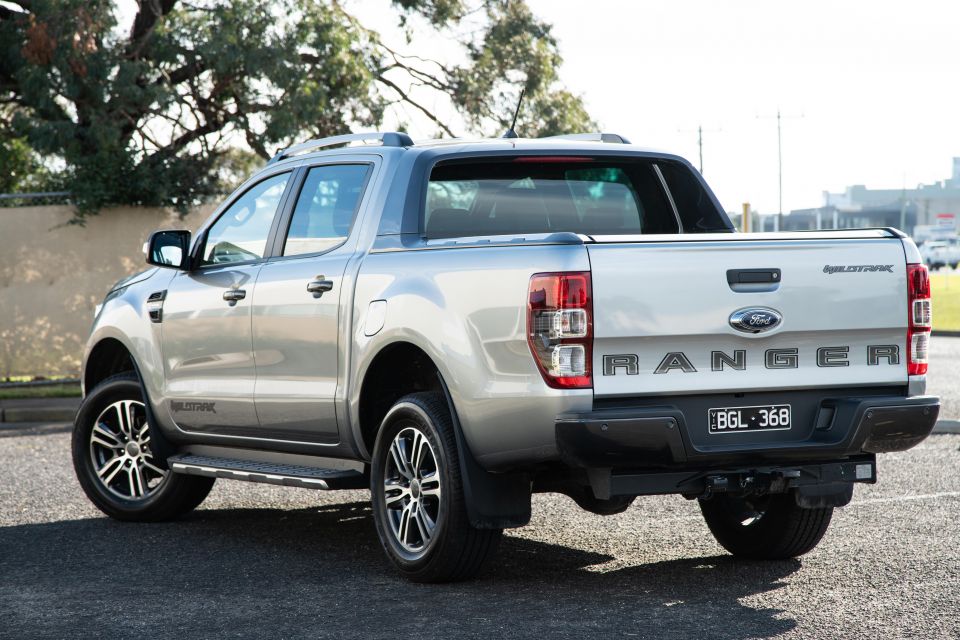
It’s the only ute capable of giving the Toyota HiLux a run for its money on the sales charts, and accounts for the lion’s share of Ford sales in Australia.
We hopped behind the wheel of the highly-specced dual-cab Wildtrak to explore how the Ranger has stayed relevant.
Pricing for the range-topping Ford Ranger Wildtrak kicks off at $63,890 before on-road costs with a 3.2-litre, five-cylinder turbo-diesel engine, and stretches to $65,390 before on-roads for the more powerful 2.0-litre bi-turbo diesel on test here.
The same engine can be had for $60,540 before on-roads in the dual-cab Ranger XLT if Bi-Turbo power is your main priority.


With a mid-$60,000 price, the Ford Ranger Wildtrak occupies rarefied air in the dual-cab ute space. It’s priced in line with the Nissan Navara N-Trek Warrior, and makes the Ranger around $3000 more expensive than the Toyota HiLux Rogue and Rugged X.
Between $60,000 and $70,000 will get you a Volkswagen Amarok TDI580 Highline Black with V6 power, too.
Everything in the Ford kit bag, short of the Ford Ranger Raptor’s jump-ready suspension and other Raptor-specific equipment. The Wildtrak is fully loaded both inside and out.
The driver and passenger sit in heated seats trimmed in leather and tough-looking cloth with Wildtrak emblems sewn into their backrests, and the driver grasps a leather-trimmed steering wheel.
There’s dual-zone climate control, and an 8.0-inch infotainment touchscreen running Ford’s Sync 3 infotainment software with Apple CarPlay and Android Auto. It also has factory satellite navigation, Bluetooth phone and audio streaming, as well as a reversing camera with parking sensors.
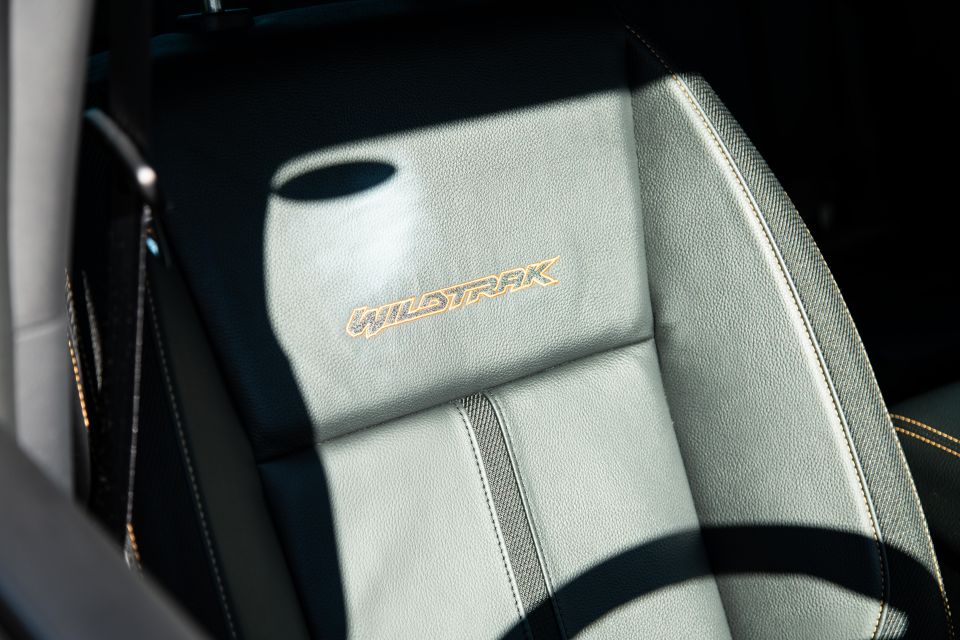
The driver is faced with an analogue rev counter flanked by two supplementary displays capable of displaying speed and fuel information on the right-hand side, and infotainment details on the left.
Ford led the charge with active safety in dual-cab utes. Autonomous emergency braking, auto high-beam, and lane-keeping assist are standard, along with adaptive cruise control and (surprisingly effective) hands-free parking.
On the outside, it rides on 18-inch alloy wheels, and features glossy grey detailing on the grille, flanks, sports bar, and Wildtrak graphics. This is still one of the most handsome utes on the market, with an American-inspired front end.
Down back, there’s a powered roll top cover for the tray, which sounds extravagant but is handy in practice. Not only is it more space-efficient than older Mountain Top covers, it can be remotely opened using the key.
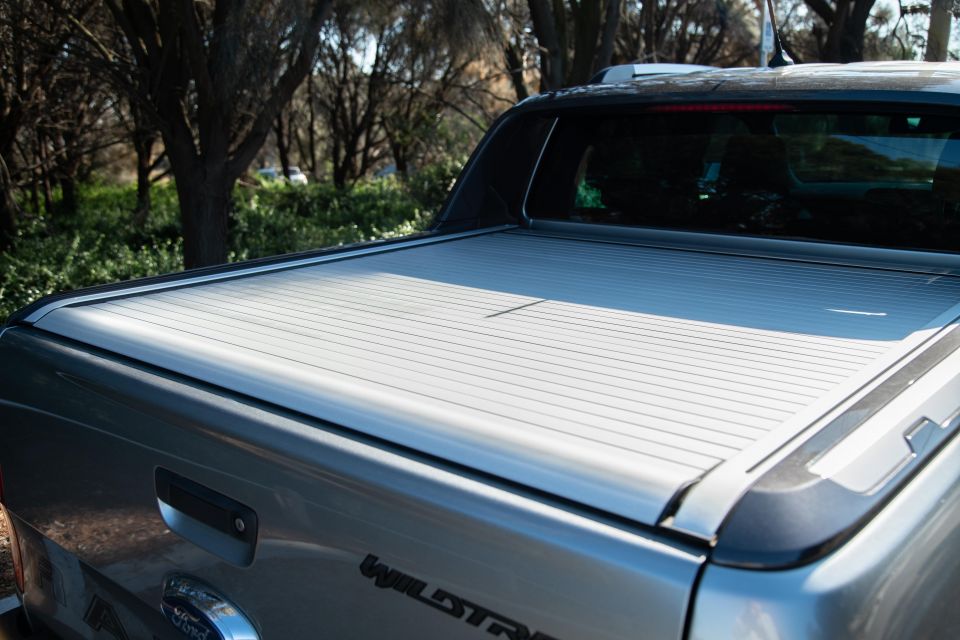

The tailgate is also counterweighted, which makes it light enough to open with a pinky. You’re unlikely to notice if you’re a big, burly he-man (how most Ranger owners see themselves), but it’s nice to have if your cannons are more popgun than Popeye (how most Ranger owners actually are).
It’s one of many small improvements Ford has made to the Ranger over its life, helping keep it fresh in the face of stiff competition.
The Ford Ranger has a five-star ANCAP safety rating based on testing out in 2015. It scored 36.72 out of a possible 37 points. You can read more about the crash test rating at the ANCAP website.
There’s six airbags including full-length curtain airbags, something the Volkswagen Amarok can’t match.
The Ranger has also since been updated with autonomous emergency braking and pedestrian detection, lane-keeping assist, and adaptive cruise control.
The Ford Ranger might be getting long in the tooth, but the interior remains one of the most comfortable and functional in the business.
The steering wheel doesn’t adjust for reach, but the driving position is excellent. The seats are supportive, and offer a commanding driving position over the Ranger’s power-bulged bonnet, along with heating for Melbourne’s frosty winter mornings.
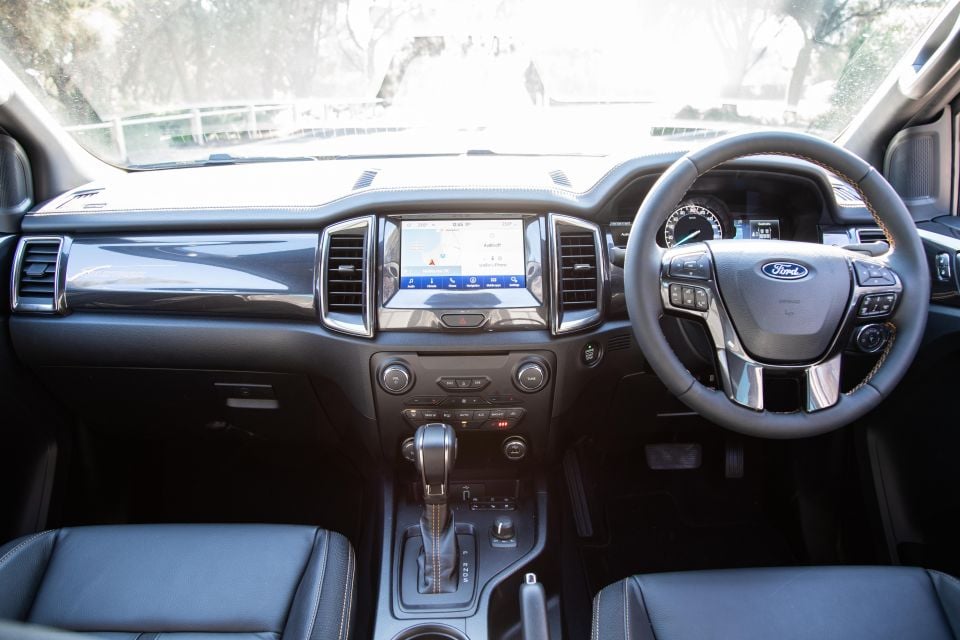
There’s plenty of storage and three USB ports up front, while rear seat space is on par when compared to the Ranger’s dual-cab ute rivals. That means you’ll fit average-sized people back there, but headroom is limited for taller passengers.
It’s arguably a better place to be than the skinny Triton and slightly agricultural HiLux, thanks not only to the space on offer but touches such the foldaway grab handles, which won’t batter your head over rough roads.
Unfortunately, there are no rear air vents. The power point and 12V socket are nice, but we’d argue the kids are more likely to appreciate cooling air on a hot summer’s day, or USB ports to charge their devices.
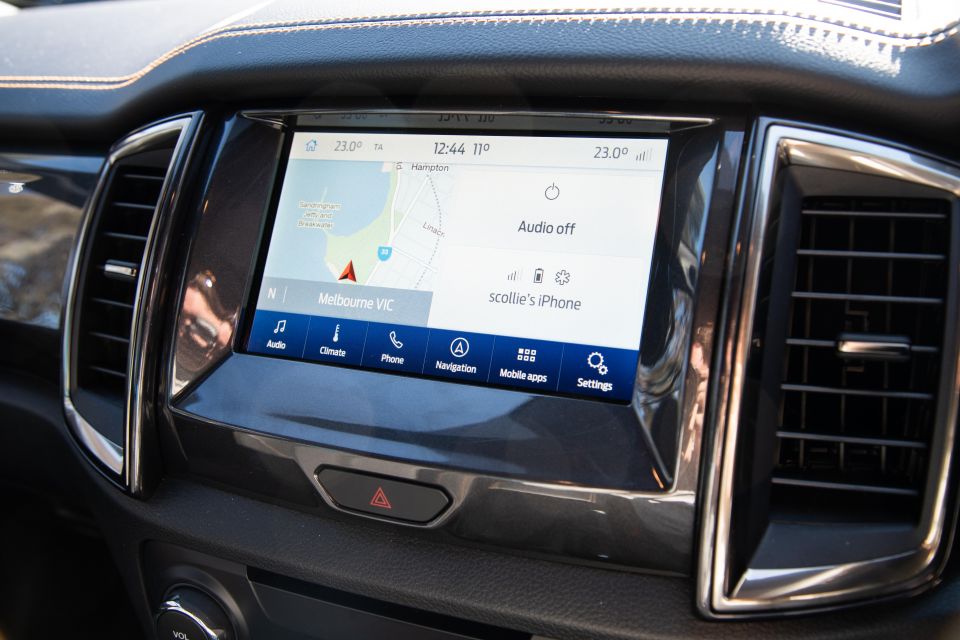
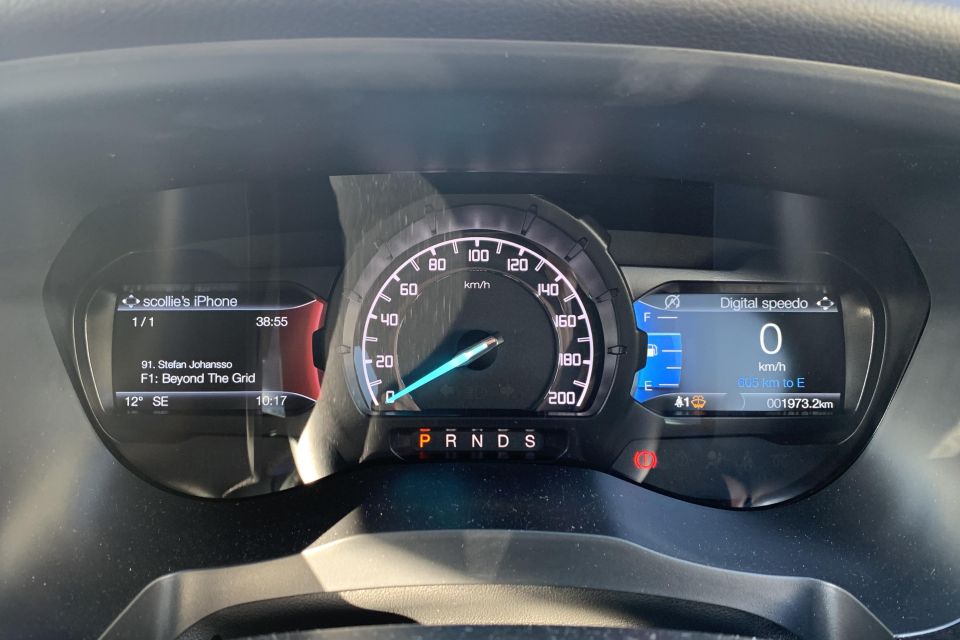
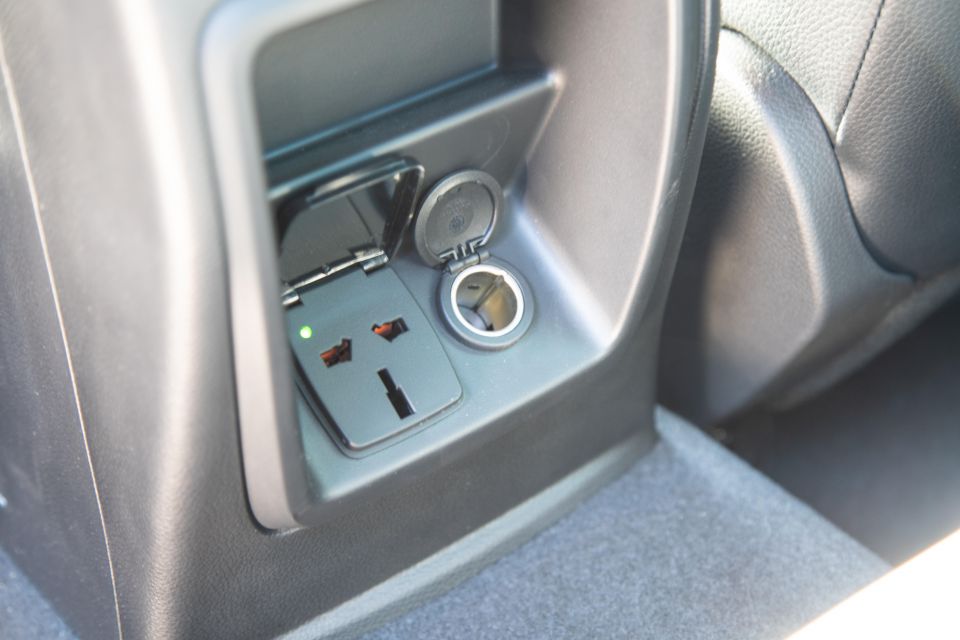
Ford has a jump on its competitors on the technology front. The Sync 3 infotainment system packs satellite navigation, Apple CarPlay and Android Auto, and is streets ahead of the basic system in the Toyota HiLux.
It’s also got the Mitsubishi Triton and Nissan Navara licked on the technology front. Ford’s native voice control is among the best in the business, and the addition of over-the-air software updates means your infotainment system can gain skills over its life.
The instrument binnacle is a paragon of clarity, with an easy to read speedometer flanked by two displays. The left-hand side can show phone, entertainment, or navigation data, while the right shows trip data, including a digital speedo.
Ford’s reversing camera is one of the clearest out there, too, and includes a zoom function for attaching a trailer.
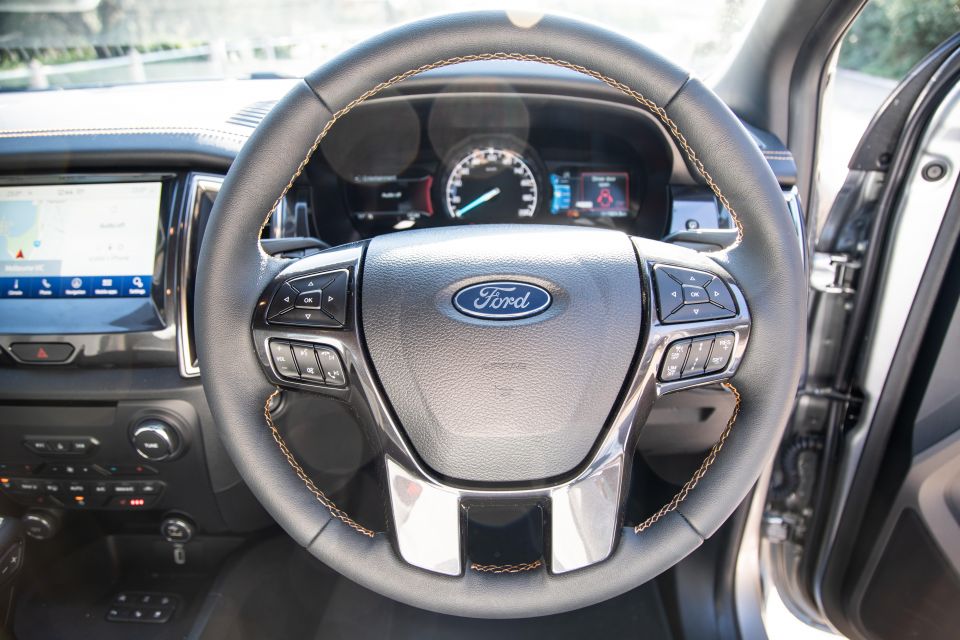
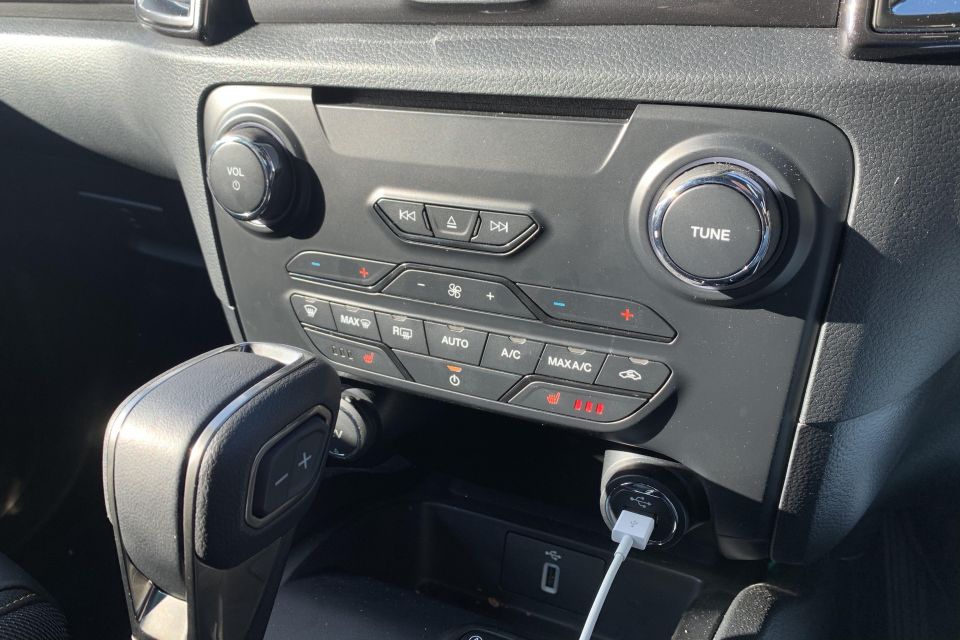
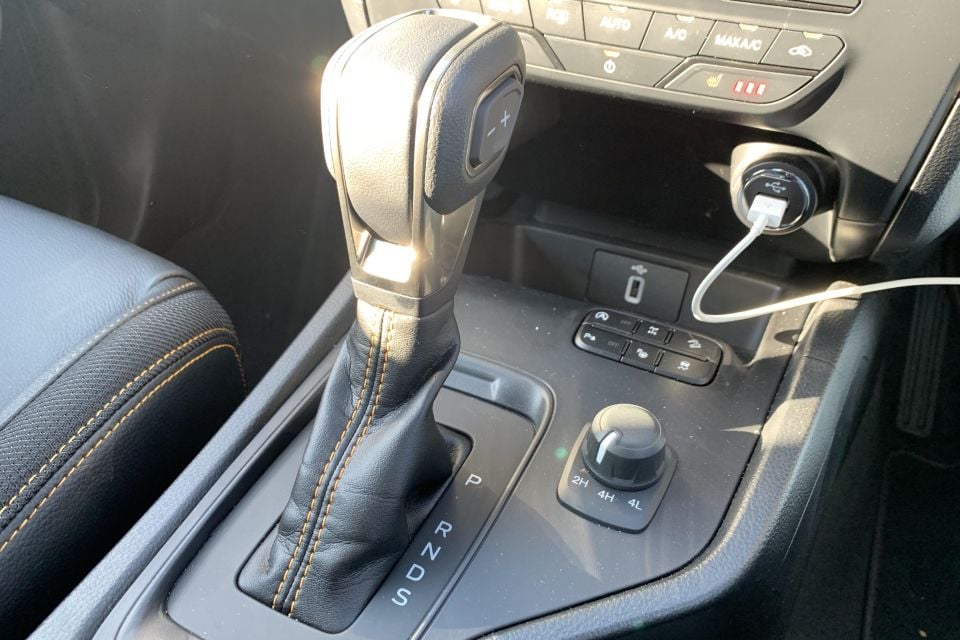
Although it’s a high-end model, the Wildtrak still possesses plenty of hard plastics. That wouldn’t be ideal in a passenger car, but it’s worth keeping in mind the people who still use their utes for work.
Being able to bash around in steel-cap boots on dusty work sites is still high on the priority list, and the Ranger feels tightly screwed together.
There’s no replacement for displacement, right? Wrong, in the case of the Ranger Wildtrak.
Although it’s still offered with a 3.2-litre five-cylinder turbo-diesel engine, the range-topper is a 2.0-litre four-cylinder bi-turbo diesel making 157kW of power and 500Nm of torque – up 10kW and 30Nm on the five-pot.
There’s no manual option. The Bi-Turbo Ford Ranger Wildtrak is instead exclusively offered with a 10-speed automatic co-developed with General Motors.
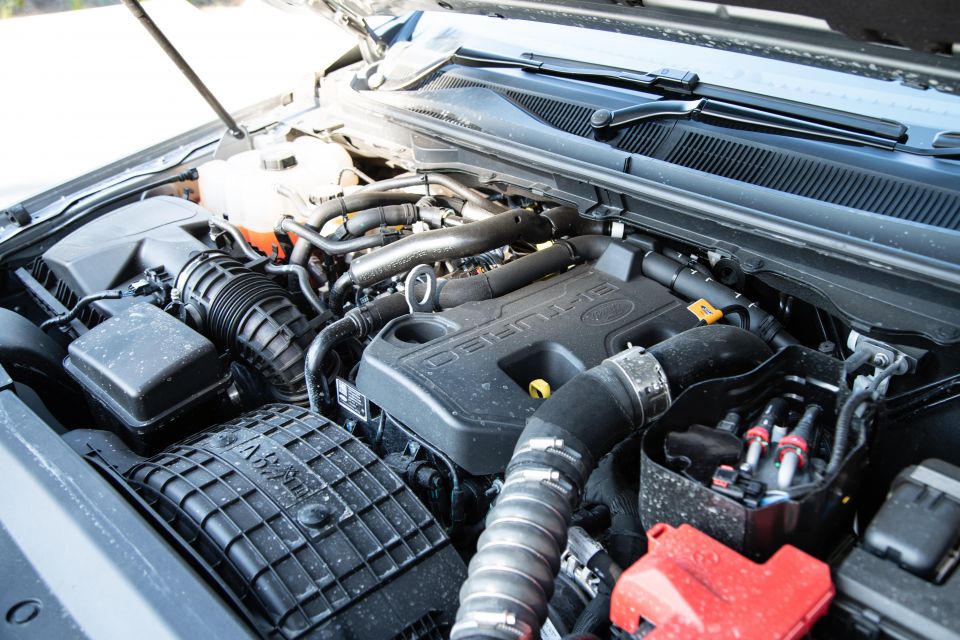
That’s right, this is a burly ute with a milk bottle-sized motor and new-fangled transmission born of a partnership between bitter American rivals. We live in strange times.
Braked towing capacity is 3500kg, and payload is 954kg, so it’s just as capable as the bigger 3.2-litre engine if you’re into hauling things around.
Ford claims 7.4L/100km on the combined cycle, we saw 9.7L/100km in a week heavily skewed to city driving.
The Ford Ranger Wildtrak is among the most car-like dual-cab utes on the market to drive. It starts with the engine, which is smoother, quieter, and punchier than the five-cylinder it has usurped atop the line-up.
You’re always aware it’s a turbo-diesel engine, with a decent background clatter on a cold startup, but there’s far less of it than in the 3.2-litre five-cylinder.
Ford has clearly made an effort to make the Ranger feel grown up. The engine registers barely a murmur under light throttle, and noise from the tyres, mirrors, and motor is hard to spot at highway speeds compared to its rivals.
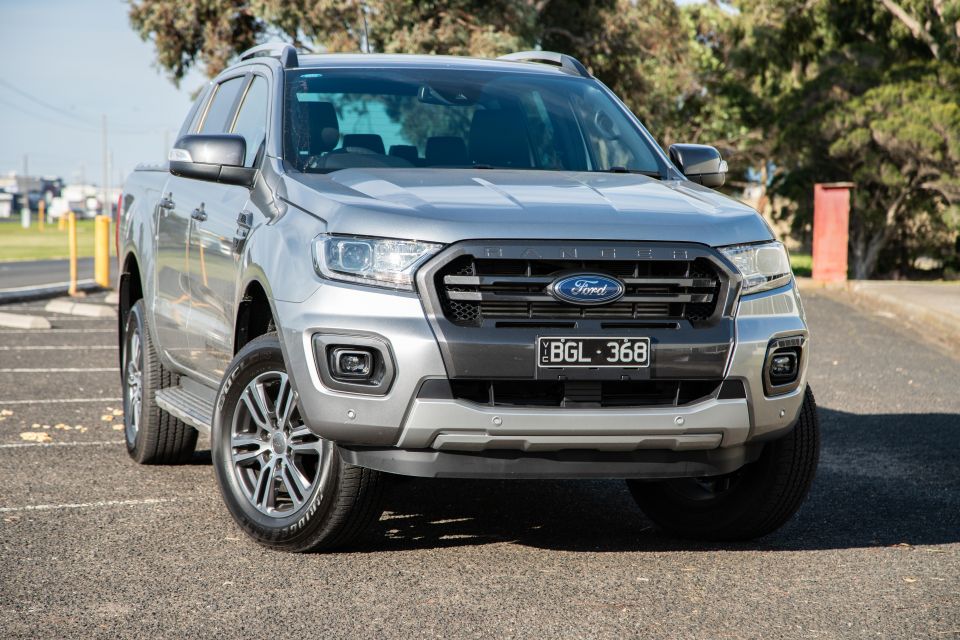
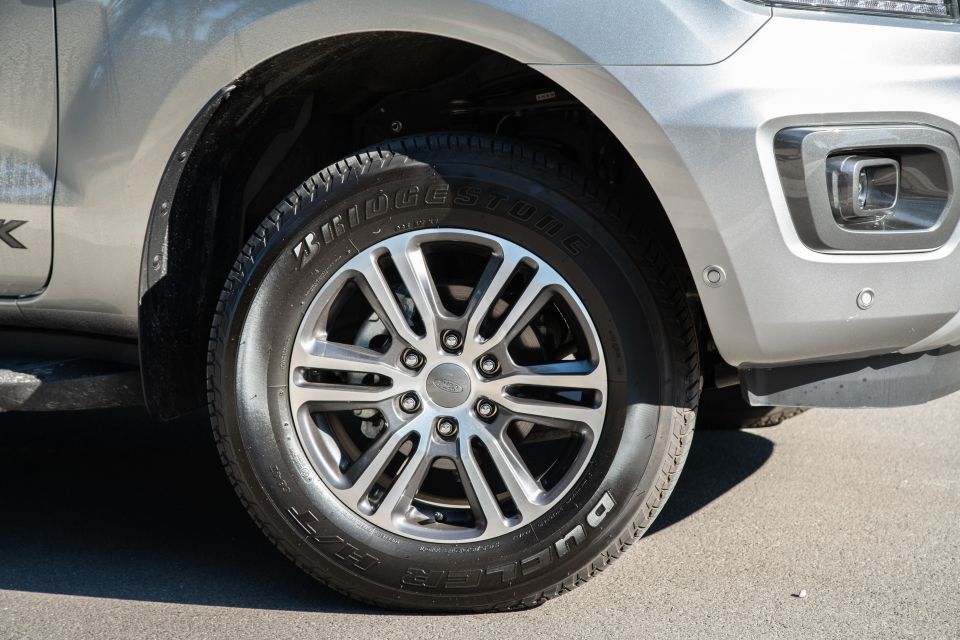
Despite its small displacement, the Bi-Turbo engine doesn’t feel underdone compared to the larger engines offered elsewhere in dual-cab world. Its outputs should tell you as much, as should the payload and towing figures.
Critical to the engine’s impressive behaviour is the smartly-tuned 10-speed automatic, which manages to keep you in the meat of the torque band essentially all the time without feeling fussy, or like it’s lost in the huge spread of ratios on offer.
More often than not it’s hard to tell which gear you’re in, but it doesn’t matter because there’s always performance when you lean on the throttle, from standstill to highway speeds.
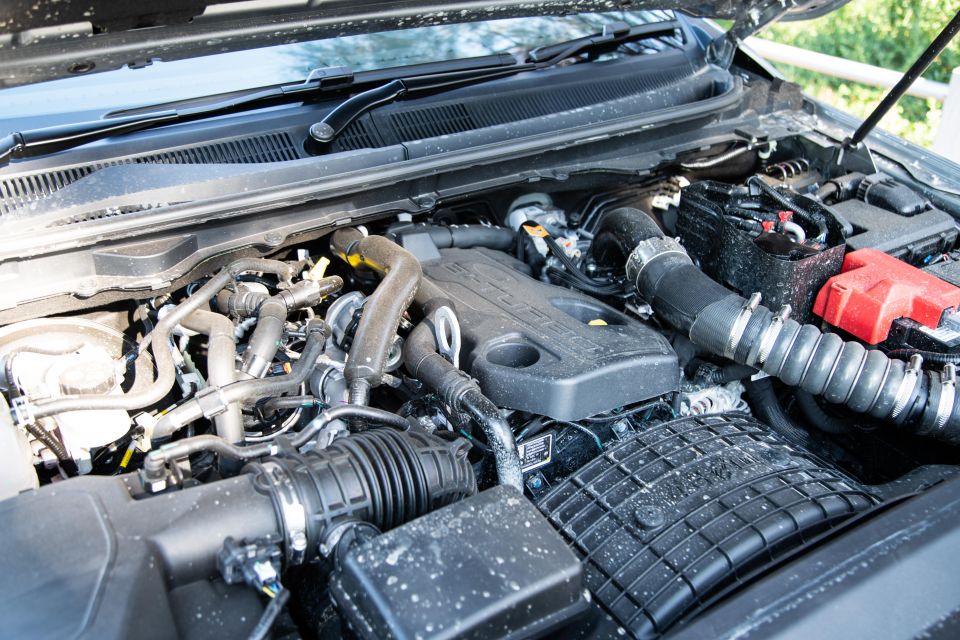
Hands-on off-roaders can manually change gears using a rocker switch on the side of the gear selector, but it’s a poor substitute for paddles or a sequential-style shift. Best to leave the transmission to its own devices.
Like its dual-cab rivals, the Ranger Wildtrak can be a bit jiggly with no load in the tray. Although their equipment levels and prices extend well into family SUV territory, these utes are commercial vehicles at heart. Leaf springs designed to handle almost a tonne of load can only be so refined.
With that said, the ride in the Ranger is very good for a dual-cab with nothing in the tray. Ford’s local tuning has clearly paid dividends, because it’s settled at highway speeds and doesn’t skip over small inner-city imperfections.
The steering is light at city speeds, hiding the dual-cab Ranger’s heft and making it one of the easier utes to park. And if you aren’t a confident parker, there’s hands-free park assist capable of automatically steering you into a parallel spot provided you can control the pedals.
It worked in our experience, and having chunky all-terrain tyres means the computer getting it wrong won’t result in scraped wheels. Who said dual-cab utes don’t make good city cars?
With an 800mm wading depth and 237mm of ground clearance, switchable four-wheel drive with low-range, and a locking rear differential, there are the bones of a very capable off-roader in the Ranger. It comfortably dispatches fire trails, and will get you to the tricky camping spots without too much struggle.
Four-wheel drive engages quickly and smoothly, and previous experience has shown Ford’s traction control is well tuned for gravel.
Maintenance for the Ranger is required every 12 months or 15,000km – whichever comes first.
In addition to its five-year, unlimited kilometre warranty, Ford offers capped-price servicing for the Ranger.
The first four services will cost no more than $299 while the fifth service will cost $365.
There’s a reason the Ford Ranger is one of the best-selling cars in Australia. It’s excellent.
The Wildtrak is one of the most expensive diesel dual-cab utes on the market, but it can justify the price with a comfortable interior, excellent road manners, and a modern, refined powertrain.
It’s also capable off-road, although Toyota HiLux fans will no doubt argue their ‘unbreakable’ trucks can go further when the going gets tough.
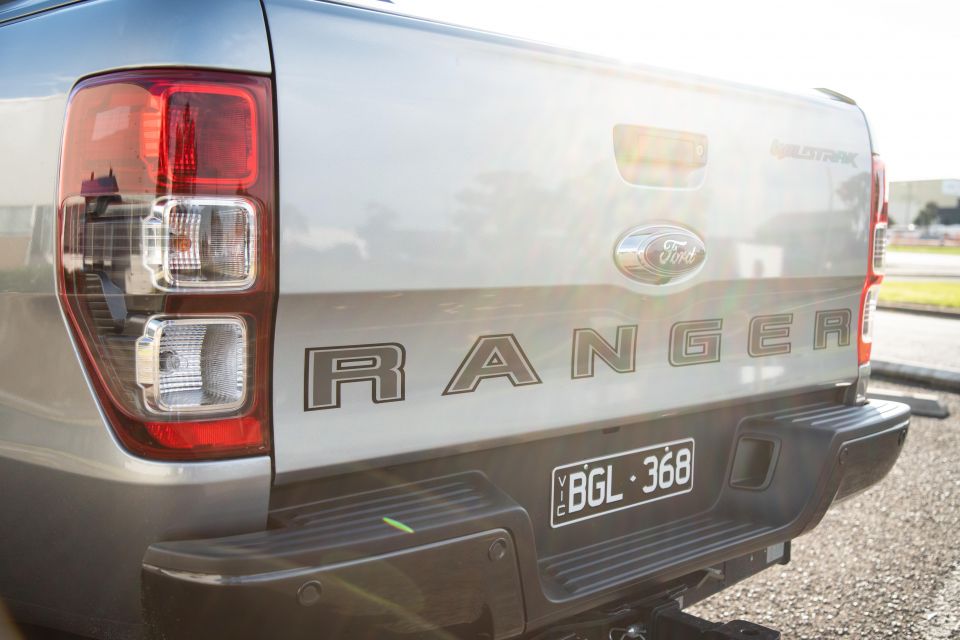
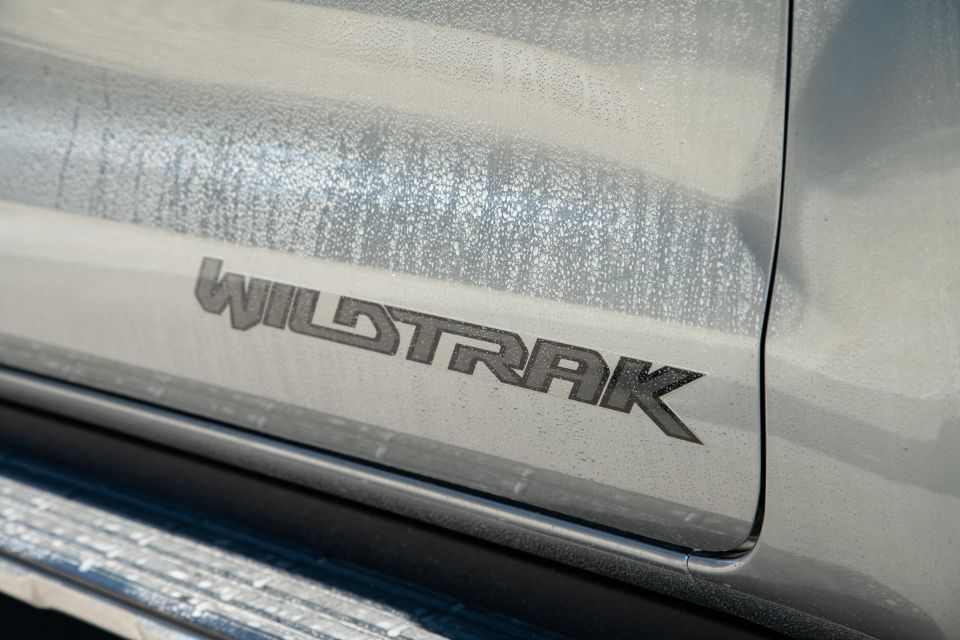
Whether you opt for the 2.0-litre engine or the 3.2-litre will come down to preference. There’s nothing wrong with the older five-cylinder, and some will no doubt like the fact it’s a tried-and-tested option.
But if it’s refinement you want, the Bi-Turbo is hard to beat. It’s where my money would be going.
As for how it stacks up against its newer rivals? The new D-Max and BT-50 are unknown quantities at this point, so it’s tough to know.
Likewise the updated Toyota HiLux, which promises to ride better and pack more technology than its predecessor.
What we do know is they’ll have to be pretty damn good to topple the Ranger.
Where expert car reviews meet expert car buying – CarExpert gives you trusted advice, personalised service and real savings on your next new car.
Scott Collie is an automotive journalist based in Melbourne, Australia. Scott studied journalism at RMIT University and, after a lifelong obsession with everything automotive, started covering the car industry shortly afterwards. He has a passion for travel, and is an avid Melbourne Demons supporter.


Josh Nevett
29 Days Ago
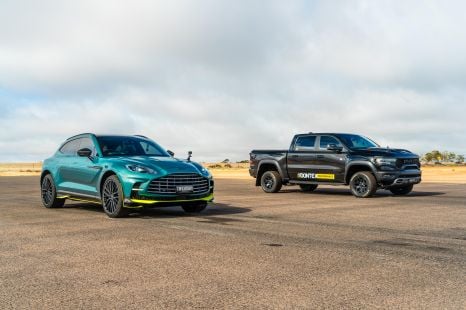

Paul Maric
28 Days Ago
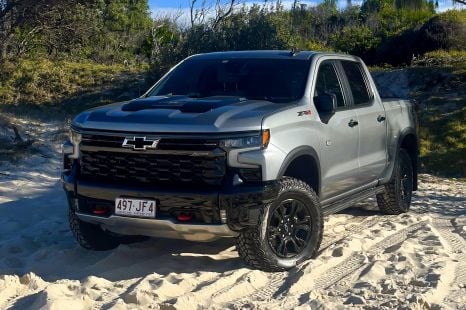

William Stopford
28 Days Ago


Paul Maric
15 Days Ago


Max Davies
10 Days Ago
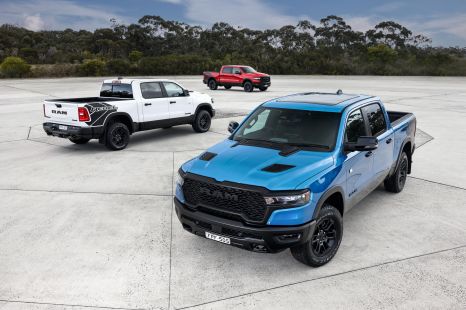

William Stopford
6 Days Ago